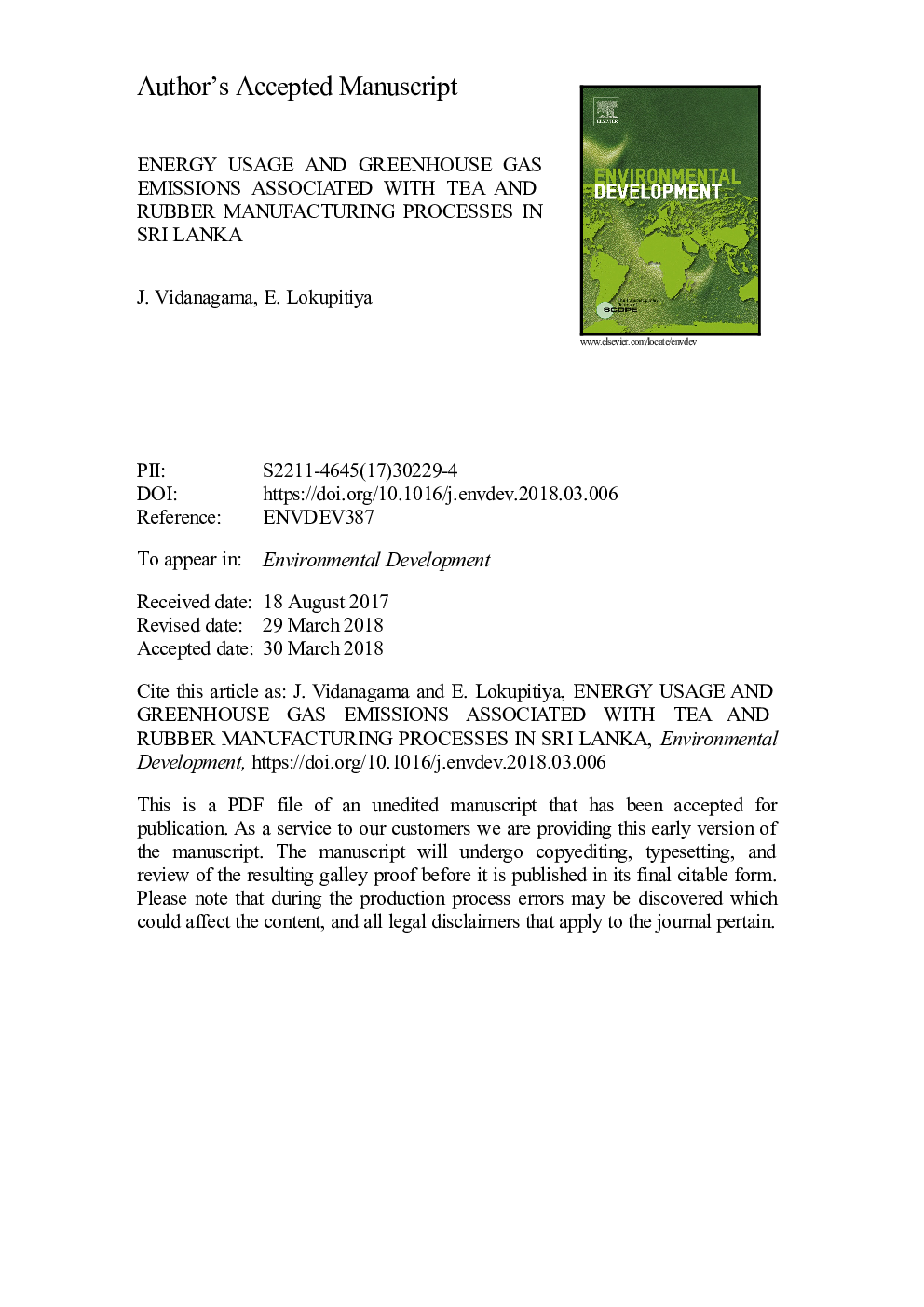| کد مقاله | کد نشریه | سال انتشار | مقاله انگلیسی | نسخه تمام متن |
|---|---|---|---|---|
| 8848265 | 1618075 | 2018 | 21 صفحه PDF | دانلود رایگان |
عنوان انگلیسی مقاله ISI
Energy usage and greenhouse gas emissions associated with tea and rubber manufacturing processes in Sri Lanka
ترجمه فارسی عنوان
مصرف انرژی و انتشار گازهای گلخانه ای در ارتباط با روند تولید چای و لاستیک در سریلانکا
دانلود مقاله + سفارش ترجمه
دانلود مقاله ISI انگلیسی
رایگان برای ایرانیان
کلمات کلیدی
چای، لاستیک، انرژی، گاز گلخانه ای، سری لانکا،
موضوعات مرتبط
علوم زیستی و بیوفناوری
علوم محیط زیست
بوم شناسی
چکیده انگلیسی
The objective of this study was to analyze the greenhouse gas (GHG) emissions associated with energy usage in tea and rubber industries in Sri Lanka. The scope of the study covered GHG inventory analysis of carbon dioxide, methane and nitrous oxide emissions associated with tea and rubber products, considering a life cycle approach starting from the plantations to the processed products. The functional units of tea and rubber products were 'one metric ton of tea' and 'one metric ton of dry rubber content (DRC)' respectively. Total GHG emission ranged from 514.27â¯Â±â¯68.66 (high-grown) to 603.10â¯Â±â¯191.58 (Uva) kg CO2e tonâ1 of made tea and the emissions were not statistically significant (pâ¯>â¯0.05; ANOVA and Tukey's multiple comparison tests) among the four tea growing regions, namely, high-grown, mid-grown, low-grown and Uva regions. The electricity consumption contributed 63% of the GHG emissions in tea industry and the rest of the emissions were from fossil fuel (23%) and biomass (14%) usage. GHG emissions associated with rubber plantations were 155.6â¯Â±â¯47.4â¯kg CO2e per ton of DRC. GHG emissions in raw rubber processing factories of crepe and ribbed smoked sheet (RSS), centrifuged latex and technically specified rubber (TSR) were 168.6â¯Â±â¯44.1, 125.1â¯Â±â¯24.8 and 375.60â¯kg CO2e per ton of DRC respectively. GHG emissions associated with latex based and dry rubber based industries were 1472.1â¯Â±â¯1011.8 and 1801.23â¯Â±â¯360.26â¯kg CO2e per ton of DRC respectively. The main source of GHG emissions in rubber industry was the use of grid electricity. GHG emissions associated with electricity usage in rubber plantations, crepe and RSS, centrifuged latex, TSR, latex based and dry rubber based industries were 15%, 80%, 42%, 53%, 75% and 52% respectively and the remaining emissions were from diesel, biomass, and fuel oil usage. Fuel switching in the manufacture of dry rubber based products has contributed to mitigation of GHG emissions by about 80%.
ناشر
Database: Elsevier - ScienceDirect (ساینس دایرکت)
Journal: Environmental Development - Volume 26, June 2018, Pages 43-54
Journal: Environmental Development - Volume 26, June 2018, Pages 43-54
نویسندگان
J. Vidanagama, E. Lokupitiya,
